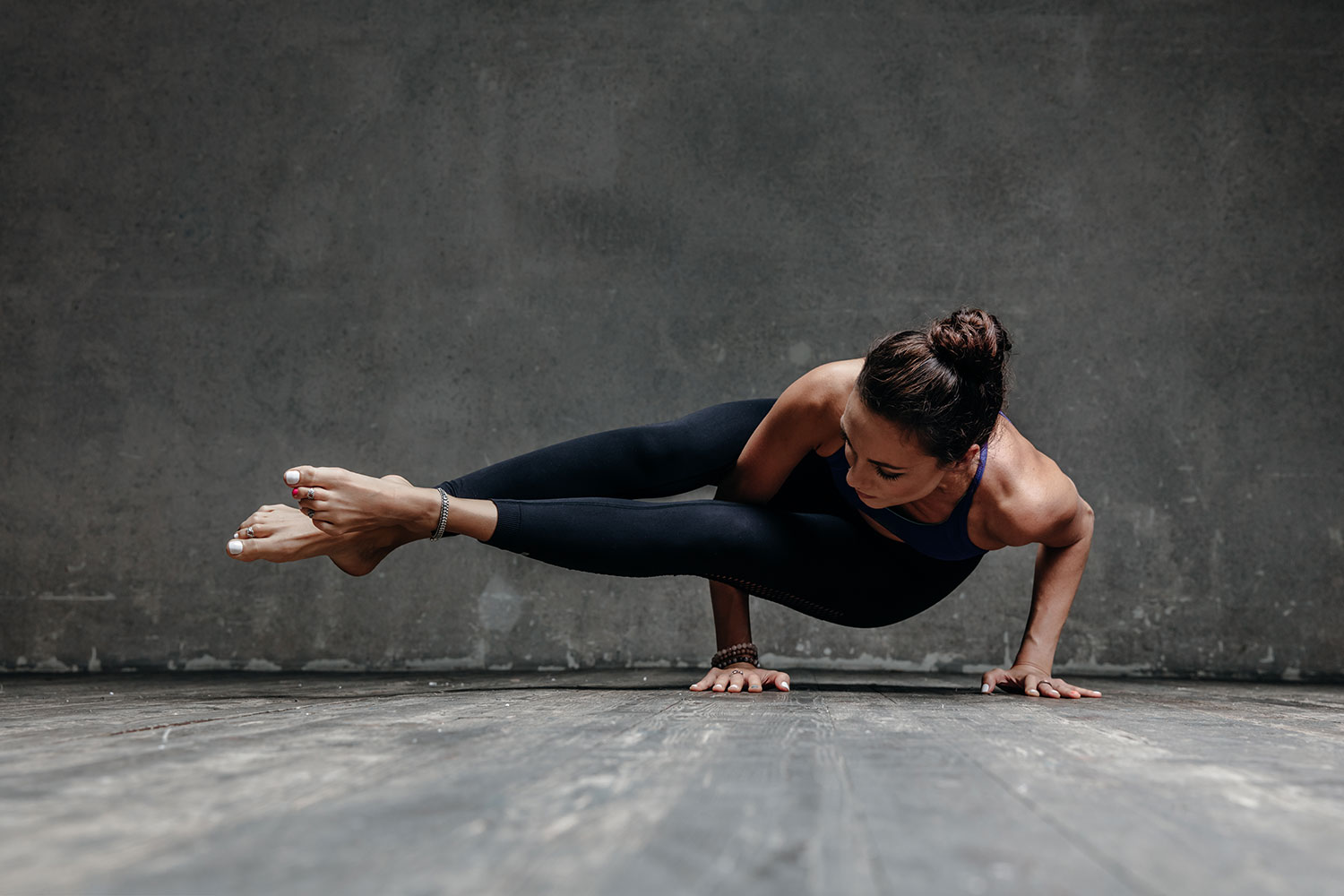
Rose graduated with a degree in Anthropology, which takes her…
Many people come to yoga because they want to overcome challenges in their daily life. Whether they are looking for a release from anxiety and stress, to become more in tune with their true Self, or for more physical reasons such as flexibility or strength, yoga is often characterized as a solution. However, what happen when the solution itself is challenging? Yoga is an ancient practice and was never meant to be the answer to life’s challenges. Rather, it is a philosophy and a guide to living. It does not eradicate challenges and problems, but rather teaches the yogi how to maintain equanimity and live peacefully through life’s inevitable challenges.
Change only happens in the present moment. The past is already done. The future is just energy and intention. Kino MacGregor
As such, the practice of yoga can be full of its own challenges. Many practitioners give up yoga due to these challenges. However, there are many practical ways to deal with the challenges in a yoga practice, and use these challenges to learn and grow.
What kind of challenges might you face in yoga?

There is a wide range of challenges that the yogi might face, from the physical to the financial to the more esoteric. Many yogis who are just beginning their practice may face the financial challenge of affording costly yoga classes, buying a mat, buying ‘yoga clothes,’ and more. Another challenge that yogis face throughout their life is calming the racing mind. Although yoga teaches tools and skills to do this, even the most advanced yogi may come to their mat and struggle with calming their thoughts. Physical challenges such as strength, flexibility, and injuries may arise. A person’s unique anatomy may even create challenges to entering certain expressions of poses. For example, a person with shorter limbs might struggle with the floating transitions of the Ashtanga yoga practice. Yoga will bring up emotional challenges, as well, including suppressed emotions, anger, frustration, and more.
Why is it important to face these challenges?

Yoga teaches strength, perseverance, and Santosha (contentment) within difficult times, and to release attachment from goals or outcomes. As such, yoga gives all the tools to deal with its challenges. That does not mean that it will be easy to deal with yoga’s challenges. However, it is essential for the yogi to face these challenges rather than to avoid them.
Ways to deal with challenges in your yoga practice
There are many ways to deal with challenges in yoga, and these will differ based on a person’s specific circumstances, and the challenge itself. Below are a few examples of common challenges that yogis face, as well as solutions to try.
Quit comparing

Many new yogis will find their eyes drifting on the mat. It is easy to compare your own practice with that of others, even if they have been practicing for many more years.
Comparison is the thief of joy. Theodore Roosevelt
Those who find themselves struggling with comparison on the yoga mat may find this is indicative of a wider challenge. They may be comparing themselves unfairly in other realms of their life. But where does comparison come from and why do people do it?
Comparison has its roots in the ego. The ego is a person’s self image. However, this image is not of the true self. Rather, ego is based in external circumstances and perceptions. The ego blocks a yogi’s path to Aparigraha, or un-attachment, as the ego is based on attachments to a false sense of self. Often, this attachment is created in comparison to the people around us. By addressing the ego, a yogi may overcome the challenge of comparison in yoga. However, this will be a process which may last a lifetime.
Building a home practice

What he meant by this is that yoga is nothing without the commitment to engage in it. For many, though, building a home practice can be challenging. Before addressing this, though, the yogi must discover why they are struggling to cultivate a home practice. Some common examples include lacking a base knowledge in the yoga asanas, experiencing imbalance in the root chakra, or an imbalance in the doshas.
Yoga is 99% practice, and 1% theory. Sri K. Pattabhi Jois
To deal with the challenge of building a home practice, the yogi can try multiple things. They can study the sutras, and learn a range of asanas such as the Surya Namaskaras (sun salutations). They can create a calm, peaceful, sacred corner in their home that is welcoming to a yoga practice. They could also work on balancing their chakras and their kapha dosha, both of which could be contributing to feelings of apathy of un-motivation.
Self love and forgiveness

Yoga is an intensely personal journey into the true Self. The word yoga itself means ‘yoke’ or ‘union,’ and refers to unity between all beings and the Divine. Through yoga, people are taught they do not need to seek God or the Divine, because the Divine is already within them. However, such teachings can open up deep emotional wounds and suppressed feelings. People who previously thought they knew themselves may discover deeper layers of anger, hatred, and doubts within themselves. Learning to practice self love and forgiveness can be one of the greatest challenges to all yoga practitioners.
Learning self love will be a complicated challenge to deal with. For each person, the solution will be truly unique. Many yogis find that meditation is particularly helpful with granting clarity toward hidden emotions. Adding mantras or mudras may help deepen meditation. Additionally, certain poses such as heart openers or hip openers are associated with their respective chakras. A yoga sequence can be personally designed to include these poses, and help the yogi address their personal challenges with self love.
Adaptations

Many yogis may find themselves struggling to access certain asanas (poses) to the full expression. This could be due to injuries, personal anatomy, and even ego or pride. Similarly, the physical practice will not develop in a linear trajectory. Rather, as the yogi goes through life changes, certain asanas will fluctuate in their accessibility. For example, a person with a wrist injury may find they are unable to perform vinyasas along with the rest of a yoga class. If they attempt to perform the vinyasa anyway, due to either ego or ignorance, they may experience pain and further injure themselves. Learning how and when to adapt poses is a central challenge for many yogis.
When dealing with the challenging of adapting poses, the yogi may be best served by increasing their knowledge of asanas, or consulting with a yoga teacher or personal guru. They may also benefit from developing their own personal practice instead of attending classes, where they will feel freer to adapt and modify at ease. The use of props such as blankets, straps, and blocks will also help with adapting poses. Finally, if the yogi finds it difficult or upsetting to adapt poses or use props, they need to address why. Usually, this comes from an over-active ego. The yogi could meditate on this, and come to terms with how their ego is affecting their yoga practice.
Working with a budget

A very practical challenge for many yogis is the financial side of yoga. For those starting out, they may prefer attending a yoga class where a teacher can guide their practice. Even for yogis with more advanced practices, they can always benefit from the experience of sangha (community) that a yoga studio gives. However, the downside of this is that it can be very expensive to attend yoga classes. In some Western metropolitan centers a single yoga class can cost upwards of $30. This is very challenging for yogis living on a budget, and may make the practice seem inaccessible to many.
There are, however, multiple solutions to this problem. First of all, the yogi should reflect on why they struggle to pay for yoga classes. Can they really not afford class, or do they think the class is overpriced? The yogi should consider the teacher, and how much is fair payment for the energy and expertise that the teacher puts into each class. If the yogi truly cannot afford yoga class, they can look into the practice of ‘karma yoga.’ This type of class is offered at many studios, where class is either free, discounted, as pay-what-you-can. This is an effort for yoga studios to give back to their communities. Yogis can also discuss work exchanges with studios, such as cleaning towels or working reception in exchange for class credits. Finally, yogis can always benefit from building their home practice. All they need is the time and commitment to expend on their practice. For guidance, there are many books, videos, and online tutorials that are free and can help develop a home practice.
Conclusion

Above are just a small selection of the many challenges that a yogi will face in their journey. The suggestions on how to deal with each challenge are general, and in reality each yogi will have a unique perspective on how to deal with challenges in their own yoga practice. If the challenges ever seem to much, the yogi should remember that they can always return to the Sutras, and the philosophical and spiritual basis for yoga. By reviewing the Yamas and Niyamas, they find new insight into their own personal challenges.
Ultimately, the greatest challenge of yoga is finding the true Self, and recognizing the union between all beings. This journey may not be direct, but instead be filled with hills and valleys as the yogi discovers themselves. Challenges shouldn’t be viewed as ‘negative,’ but rather as integral stepping stones on the path of yoga.
What's Your Reaction?
Rose graduated with a degree in Anthropology, which takes her understanding of basic human needs to a whole new level. Her intelligence and passion for healthy living is reflected in her written work.














